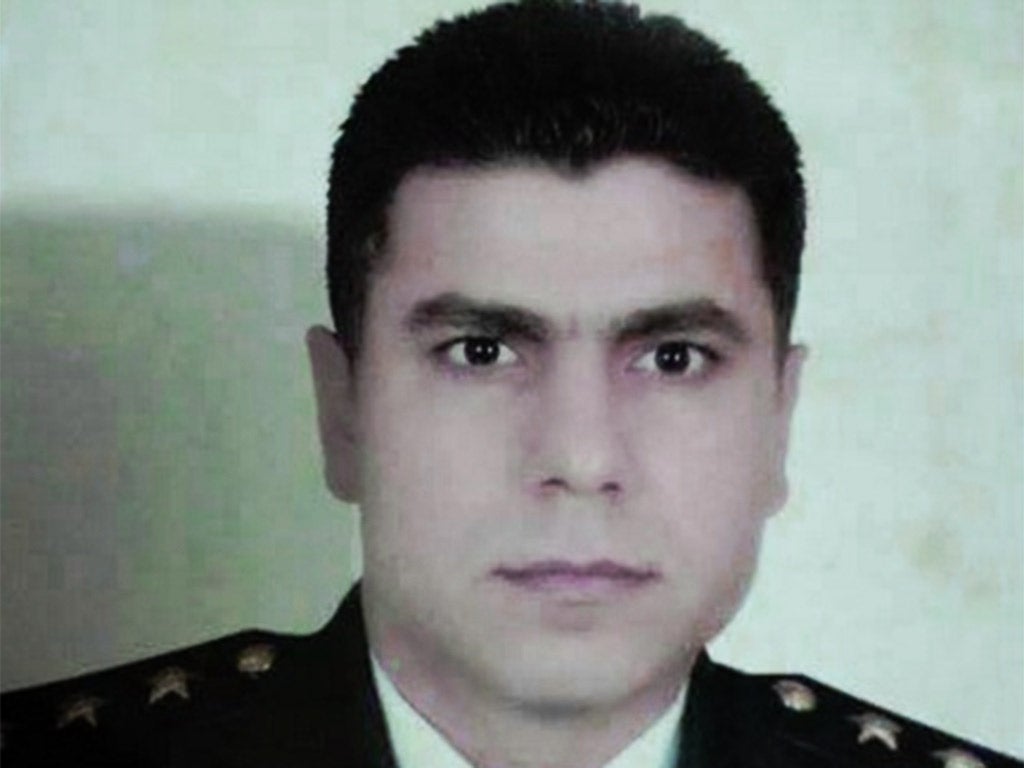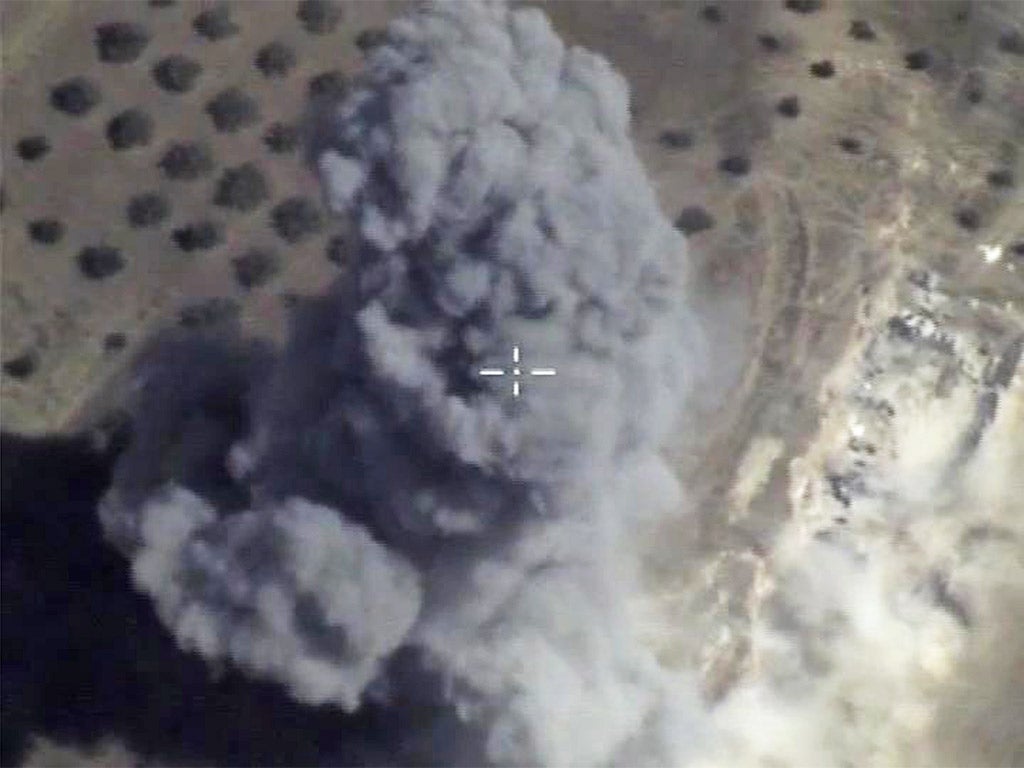Syria conflict: Russian air strikes kill rebel commander backed by the West
Basel Zimmo was the 'chief of staff' of the First Coastal Division of the Free Syrian Army

Your support helps us to tell the story
From reproductive rights to climate change to Big Tech, The Independent is on the ground when the story is developing. Whether it's investigating the financials of Elon Musk's pro-Trump PAC or producing our latest documentary, 'The A Word', which shines a light on the American women fighting for reproductive rights, we know how important it is to parse out the facts from the messaging.
At such a critical moment in US history, we need reporters on the ground. Your donation allows us to keep sending journalists to speak to both sides of the story.
The Independent is trusted by Americans across the entire political spectrum. And unlike many other quality news outlets, we choose not to lock Americans out of our reporting and analysis with paywalls. We believe quality journalism should be available to everyone, paid for by those who can afford it.
Your support makes all the difference.A day of intensive Russian air strikes in Syria has left 57 people dead, including a rebel commander who was a defector from the regime, according to opposition activists.
The attacks, which injured at least 30 others, took place in areas from which rebels have been shelling villages and towns in Latakia province, a centre of the Alawite community from which President Bashar al-Assad and the country’s ruling elite are drawn.
The UK-based Syrian Observatory for Human Rights and Local Co-ordination Committees (LCC) of activists named the dead commander as Basel Zimmo, the “chief of staff” of the First Coastal Division of Western-backed umbrella group the Free Syrian Army.

Activists’ opinions differed on Zimmo’s importance to the opposition forces. One said that the Russians were picking off experienced commanders in preparation for a land offensive by regime forces, while another claimed the rebels were exaggerating the importance of those being killed in order to show that the “moderate” leadership is being eliminated.
His death came a day after Ismail Nassif, chief of military operations for the Noureddine al-Zinki brigade, backed by the US and Saudi Arabia, was killed in Aleppo. Regime forces are trying to recapture opposition-held areas of the city and the brigade had been supplied with US Tow missiles as part of a Pentagon programme. It is also said to have received substantial funding from Riyadh.
The air strikes focused on the mountainous Jabal al-Akrad area, which the rebels have held for three years, using its high ground to position artillery and bombard President Assad’s ancestral village of Qardha and the airport at Latakia.
Russian warplanes were also in action over Idlib province, their main target the strategic town of Jisr al-Shughour, captured by insurgents earlier this year. “They are destroying all the fortifications before the attack on Jisr al-Shughour,” said Rami Abdurrahman, head of the Syrian Observatory.
The organisation reported that 370 people, including 127 civilians – including 36 children and 34 women – have died in the past three weeks from Russian bombing. The fighters killed, it said, were from the ranks of Isis and Jabhat al-Nusra, an al-Qaeda affiliate, as well as groups not deemed extremist by the West and its allies.
A senior Iranian official in London said that “Tehran and Moscow have specific unified policy” in the Syrian civil war. He added that the number of Iranian “military advisers” in Syria had been raised in recent weeks but insisted no troops had been sent. The Syrian regime’s forces were being given logistical support and Iranian intelligence had to be active, the official said, “otherwise we would be fighting Isis in the metros of Tehran”.
The Iranian authorities announced the deaths of four high-ranking officers from the Islamic Revolution Guards Corps (IRGC) in Syria in just one week, among them Brigadier General Hossein Hamedani, the most senior member of Tehran’s military to be killed in the conflict. Fourteen other IRGC officers have been killed in the past three years. Five months ago the official Irna news agency announced that 400 Iranian and Afghan “volunteers”, previously based in Iran, had been killed.
The Iranians have also been training a regime militia, the National Defence Force. Under General Hamedani its total strength had risen to 100,000, IRGC commander-in-chief Mohammad Ali Jafari has announced.
Join our commenting forum
Join thought-provoking conversations, follow other Independent readers and see their replies
Comments